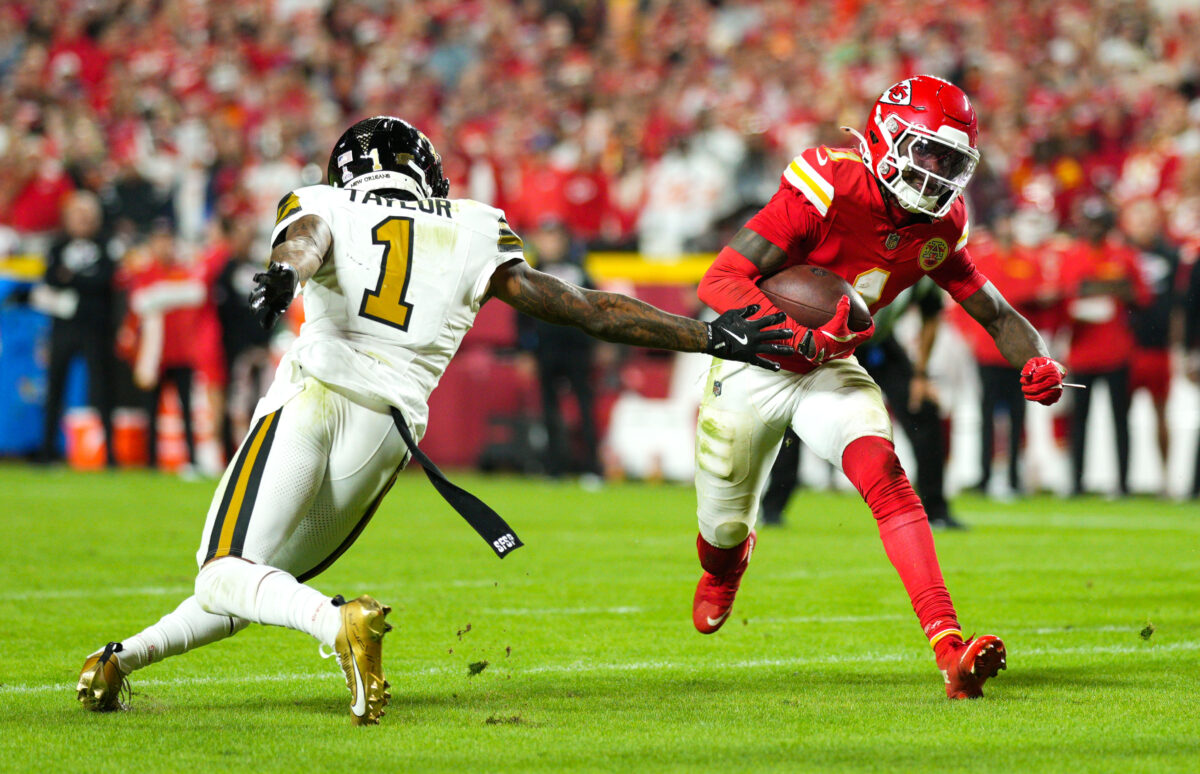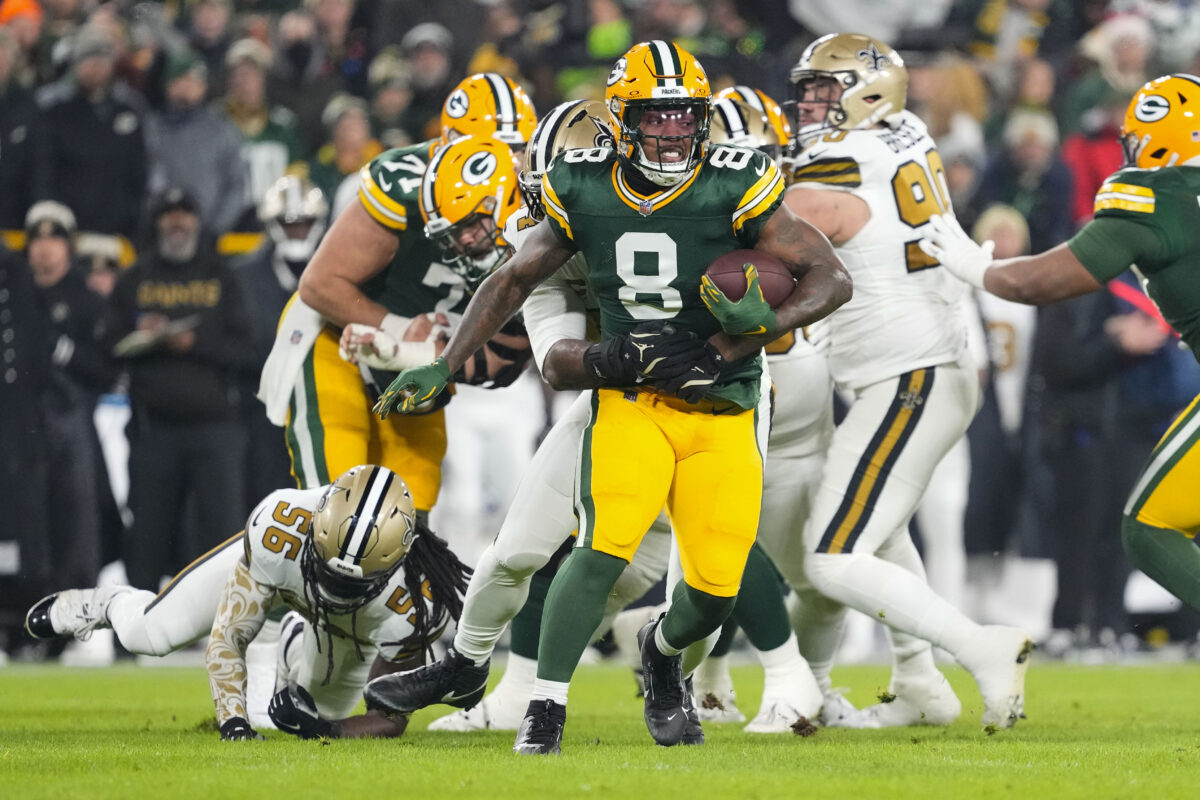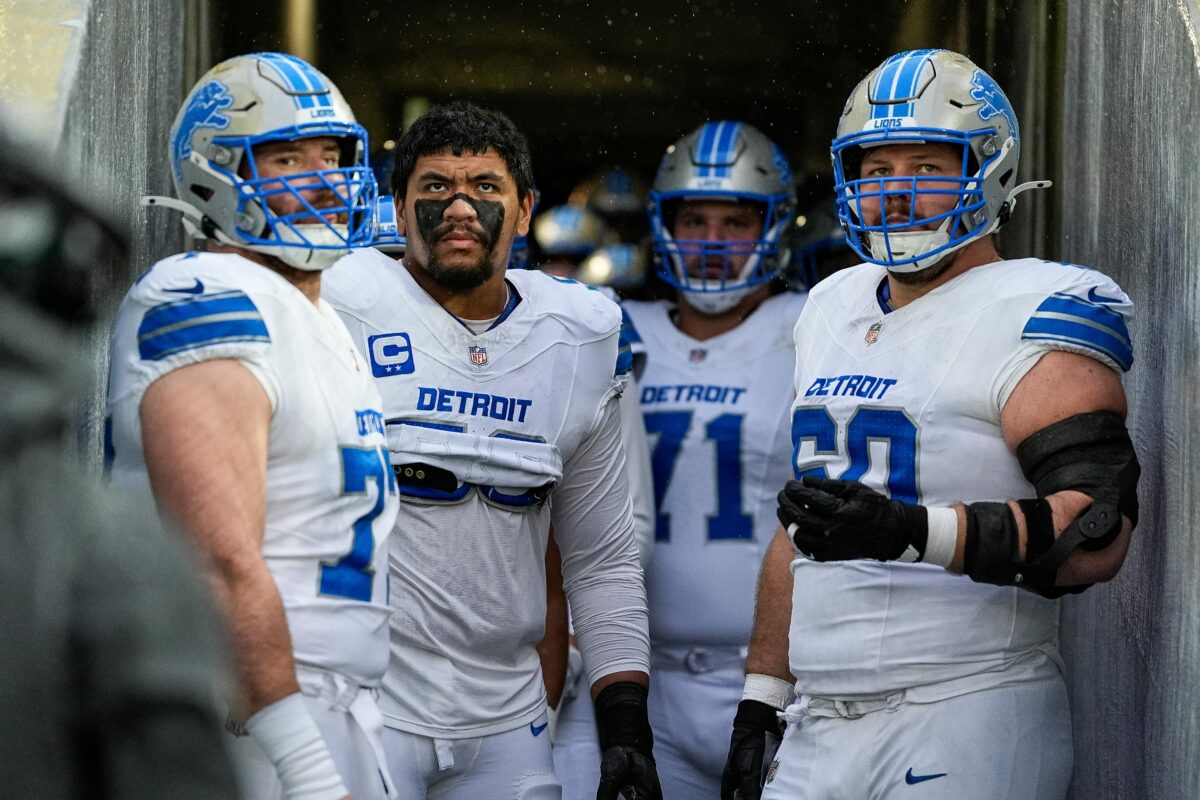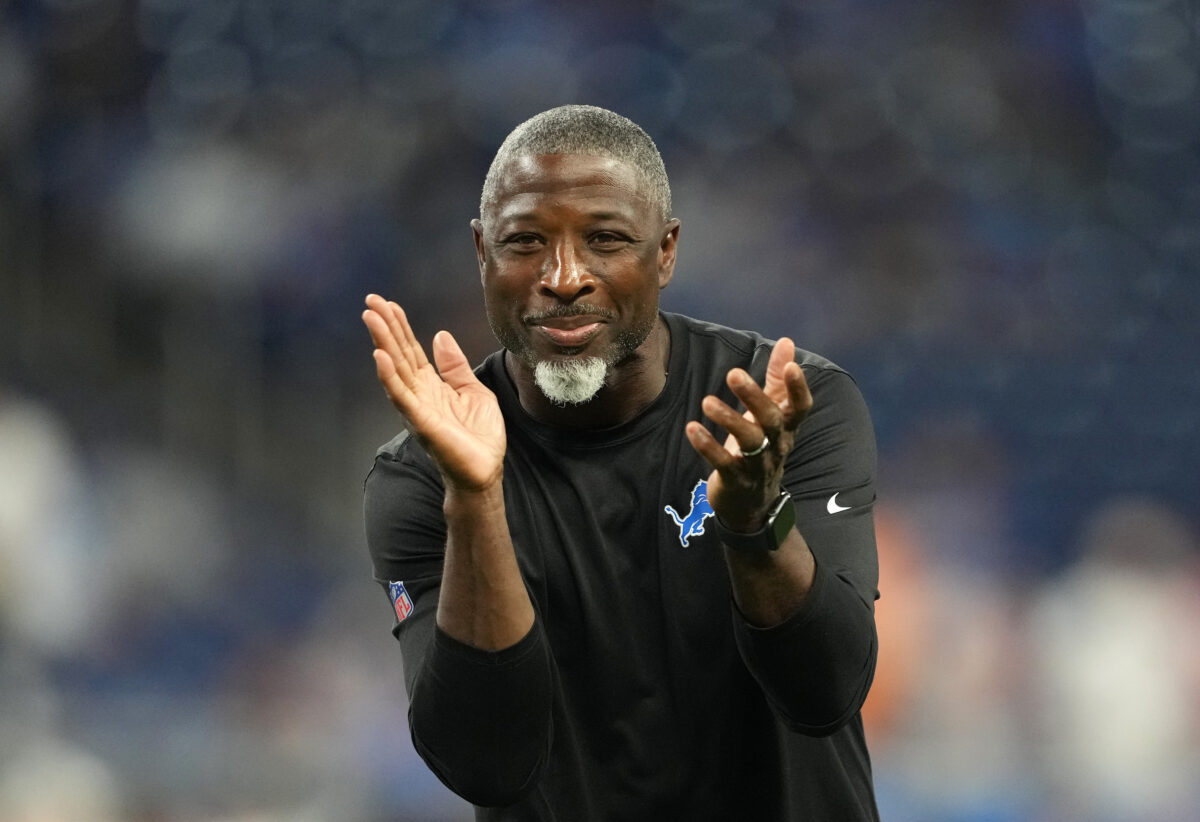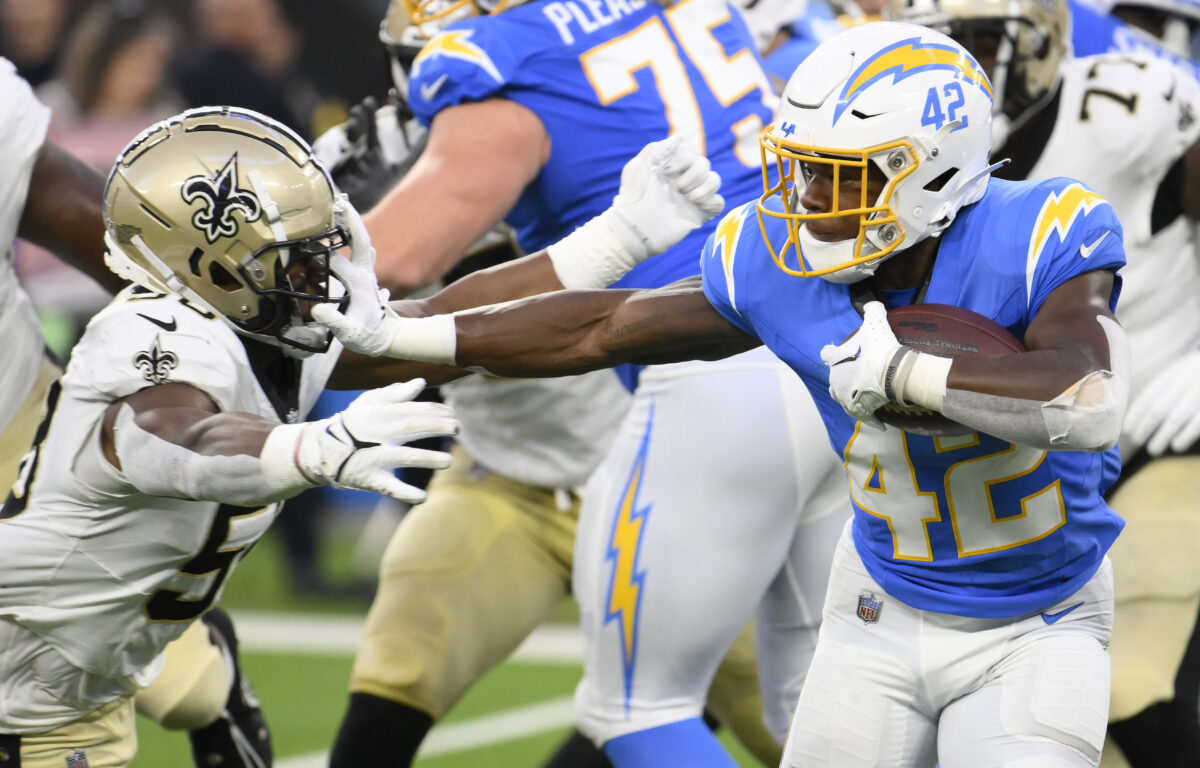Anyone who watched the Detroit Lions play down the stretch could see that the once-mighty offensive line just wasn’t playing to its typical standard. That was especially true of left guard Graham Glasgow.
It wasn’t a strong season for the 32-year-old Michigan man. His move from right guard to left to replace Jonah Jackson didn’t fare as well as hoped. Blown blocks, which aren’t exactly position-specific, were a particular problem.
In the graphic below from Stat Account, blown blocks and pressure rates for interior offensive linemen are charted. The upper right quadrant is where the best players are, a realm where right guard Kevin Zeitler prominently resides. The farther down and to the left, the worse it gets.

Glasgow’s prominence to the far left and near the bottom validates the Pro Football Focus grades he earned during the season. The veteran earned a PFF overall game score over 55.1 just twice in the final seven games; 60.0 is considered a below-average performance. Against Washington, Glasgow earned an absurdly low 10.2 score in pass protection, giving up nine QB pressures and a sack–the strip-sack on Jared Goff that created a takeaway for the Washington defense.
In his first year back from Denver, Glasgow was strong in 2023 as Detroit’s starting right guard–notably in the run game. His 2024 campaign was a lot more like his final year in Denver in 2022. Glasgow ranked 68th out of 77 guards graded by PFF who played at least 250 snaps in 2024. In his last Broncos season, when he ranked dead last in PFF overall grades amongst qualifying guards and centers.
The pattern is troubling. Glasgow is due $5.5 million in 2025 and $6.5 million in 2026, which is starter salary. Zeitler, who turns 35 in March, is a free agent. The Lions got impressive work from rookie Christian Mahogany in limited time, enough that it’s reasonable to expect him to start in 2025. Mahogany is a natural right guard, though he filled in capably at left guard.
Glasgow is also the de facto backup for center Frank Ragnow. He still brings value and merit as the top reserve interior offensive lineman, albeit a fairly expensive one. The drop in his play with no notable injuries (in Detroit) is concerning enough that the Lions need to actively look to replace him in the starting lineup. If he fights off that challenge, and don’t put it past a proud vet like Glasgow to make that happen, it’s an even better scenario for the Lions.

